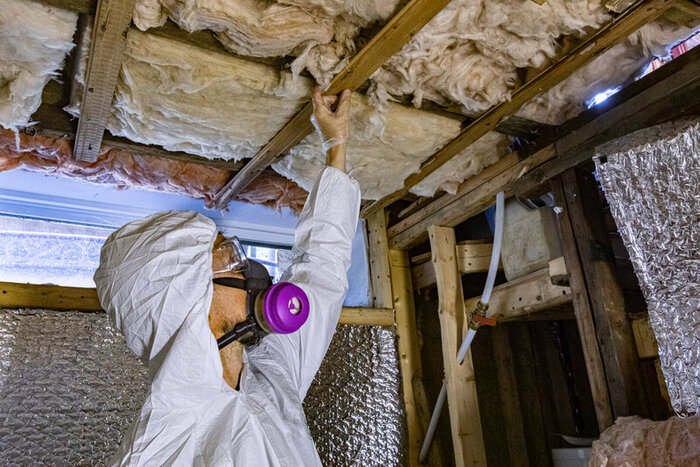
Mold is a major red flag in any home, indicating a combination of existing and future issues. Your home's attic is notorious for harboring many types of attic mold because moisture issues in the attic go undetected without regular inspections.
Mold found in the attic indicates one or more of the following:
The sooner your attic is inspected, cleaned out, sanitized, and revamped, the sooner you’ll be free of the most common molds found in the Bay Area.
Molds come in many different forms, colors, and textures. They all require sufficient moisture and a food source (like your attic and home’s structural elements) to survive. Once they’re in place, they require professional mold remediation and sanitizing to eliminate the microscopic mold spored.
It’s also essential that you address the cause of the mold to prevent future infestations. Here are some of the most common molds we find in Bay Area attics and crawl spaces.
There are dozens of different Alterneria species, only a few of which thrive indoors. The spores are spread via wind or air, so once you have Alterneria blooms, the spores recirculate via the HVAC system.
Once you’ve eliminated mold and mildew and addressed the source, we recommend scheduling a duct cleaning with your HVAC contractor so you’re starting with a fresh slate.
If you have acrimonium in your home, odds are there is (or was) a significant leak issue somewhere. Its wet, slimy spores are mostly transmitted via water droplets, although airflow can circulate dried spores.
These are two separate molds, often confused for one another because they’re so similar. The spores are transmitted via wind or airflow. However, they are also a favorite food source for many mites, so where you have Aspergillus or Penicillium, you probably have a mite or insect issue.
This is a versatile mold and is happy to make its home on various surfaces. One of its favorite food sources is wet wood, other cellulose products, or moist sheetrock paper. So, as with Acremonium, the presence of Chaetomium means there are moisture control issues - like leaks, inadequate insulation, or poor ventilation.
This is one of the most common indoor molds. Cladosporium prefers a moist environment. It’s also more resilient than other molds because it can tolerate colder temperatures, meaning it doesn’t always die off or go dormant during winter.
Epicoccum spores spread via wind and airflow. The mold is found on various substrates common in any home, including textiles and paper.
This is one of the most common molds found in showers and bathrooms (like on grout), which is a sign that Stachybotrys loves moisture. The spores travel most commonly via water droplets or water flow, finding their way into attics via leaks or condensation.
Here’s another mold that indicates a leak issue. The Torula spores are spread by wind or airflow and make their home in any cellulose materials, such as wood, paper, and cellulose insulation materials.
If you’ve got a Ulocladium infestation, you’ve got a major water issue. This particular mold species likes a very wet surface, like damp wallboard, to flourish. When released, its spores move through the air, so it can travel from one location to another via a forced air system.
Scheduling an attic inspection with a licensed professional is the best way to determine whether or not you have a mold issue in the attic. While some molds are visible, others may not be, so a simple visual inspection through the attic access panel or stairway isn’t enough.
Some of the most common signs of mold or mildew in the attic include:
Mold deteriorates the surfaces it inhabits, so attic mold control is critical for protecting the structural integrity of the roof, joists, and walls.
Ignoring mold issues has negative consequences in the long run. For example, a moldy attic contributes to:
Observing routine home maintenance is the best way to prevent mold from taking over attics and crawl spaces. Schedule annual inspections of your roof, attic, and HVAC systems to protect your wallet and catch mold before it takes over.
Do you suspect your attic harbors these or other common mold species? Schedule an attic inspection with Attic Solutions. We’ll let you know what we see and create a solid plan to get your attic back into mold-free shape.